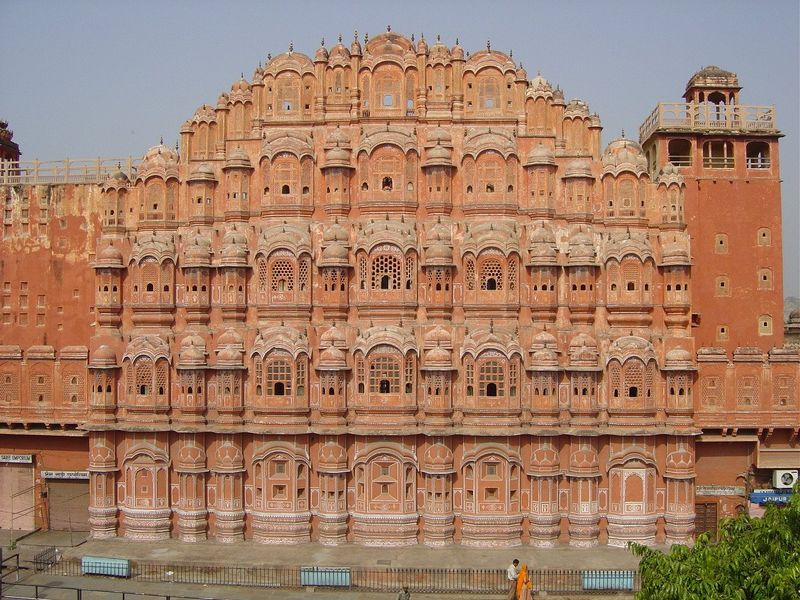
In India, a magnificent piece of gendered architecture stands, full of symbolism and human meaning that is missing from much of today’s Western buildings.
Lal Chand Usta designed the Palace of Winds on the south-east side of the Jaipur pink palace. Completed in 1799, it became an iconic example of Rajput architecture’s unique blend of Hindu and Muslim culture. The influence of Europe on India’s architecture gave rise to a new style with a baroque pageantry.
“In this style, the concept of spiritual beauty was ignored. Therefore, this Mughal baroque style got blended with the rocco style and Hawa Mahal of Jaipur came into being.” 1
Symbolism
Not much is known about the architect, but he evidently was familiar with sacred symbols and functional design of the time. A tiered grid of 953 latticed windows rise up 5 stories to a curved pyramidal roof line. The facade resembles the crown of Krishna, a decidedly feminine form that could also represent a woman’s dress. The gold tips and pink sandstone evidently represents the seated figure of Goddess Lakshmi on a lotus flower, who symbolizes wealth and good fortune in marriage.
The facade faces east, and the morning sunrise touches the tip and slowly proceeds down the entire face until it pushes away all the shadows of surrounding buildings. It thus connects the women inside with natural cycles of the sky and buildings of the city. The light and sounds peak through the slitted windows. The women of the court were privileged but not allowed to go outside. This facade was a place for them to observe and learn from the outside world.
Engaging From Behind A Screen
Each window has a balcony, is crowned by an arch, and is lusciously adorned. The feminine adornment for Laksmi is much more minimal than male gods like Vishnu, with broad curves and delicate structure. Each woman gets a window. They serve as a bright billboard for the city of the women who live there, and their religious and cultural importance to the state.
But the women from inside don’t see this grand display. What they see are colorful streams of light through paned glass, amidst soaring arches and rigid corridors. They receive soothing gusts of wind through the screens, giving the site its name “Palace of the Wind.”
Ritual bathing and clothing were traditionally performed from behind a screen. The screen allowed spectators to view the ritual but not participate or even be in the same holy space as the participants. The Muslim faith also required women to view worship from behind a screen, and otherwise be concealed as purdah-nashin. The Hawa Mahal turned this into a two-way act. The city viewed and admired this monument to palace women with solar and theological connections. The women inside received views, noise, and wind from nature and the city. This was similar to women’s roles in South Asian religious processions:
“Both groups listen to the poetry oration, and responsive dirges, although women and girls watch the male performance leaders from gaps in a bamboo screen which separates the male and female spaces… In some sense, then, the custom of gender separation means that women are both ‘inside’ and ‘outside’ the male-led event.” 2
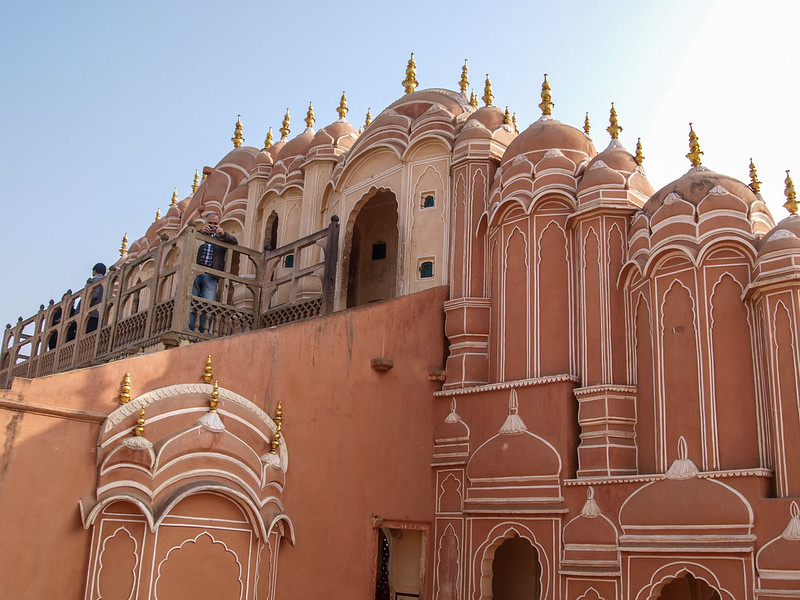
(Maliboy– flickr/creative commons license)

(Sameer Goyal Jaipur– flickr/creative commons license)

(Maliboy– flickr/creative commons license)
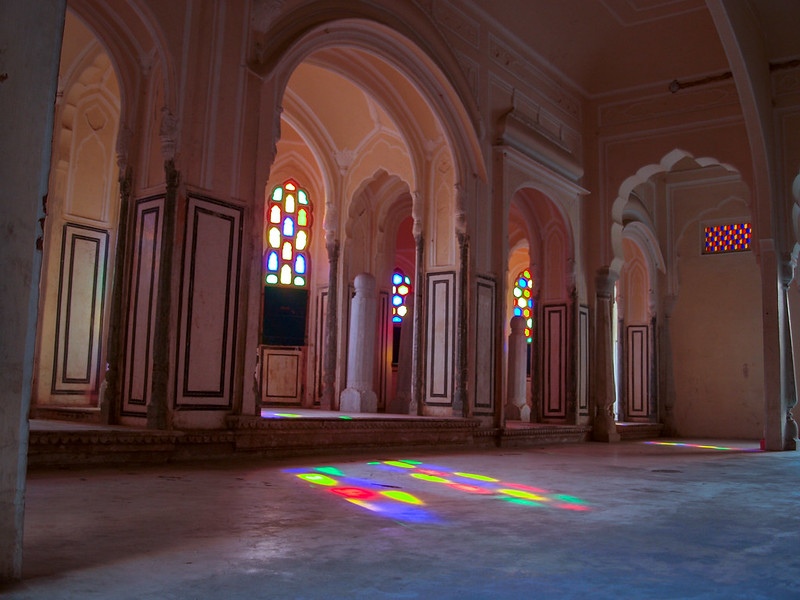
(Maliboy– flickr/creative commons license)
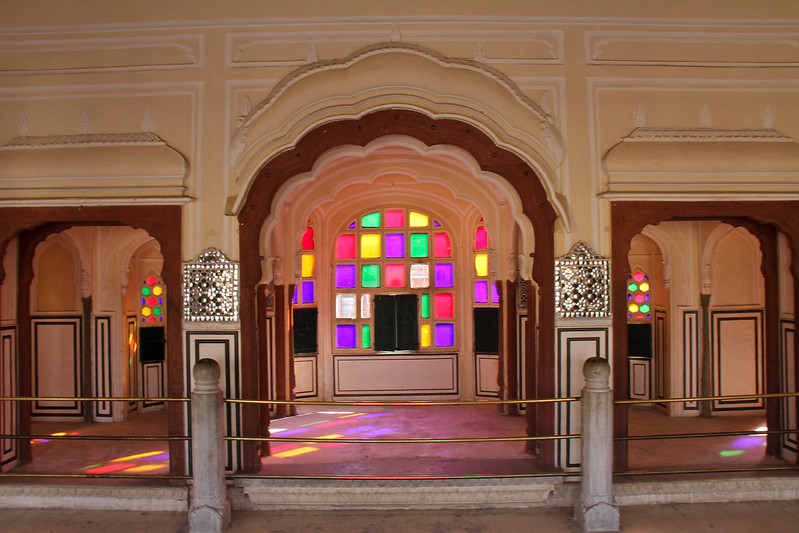
(piyush.k– flickr/creative commons license)
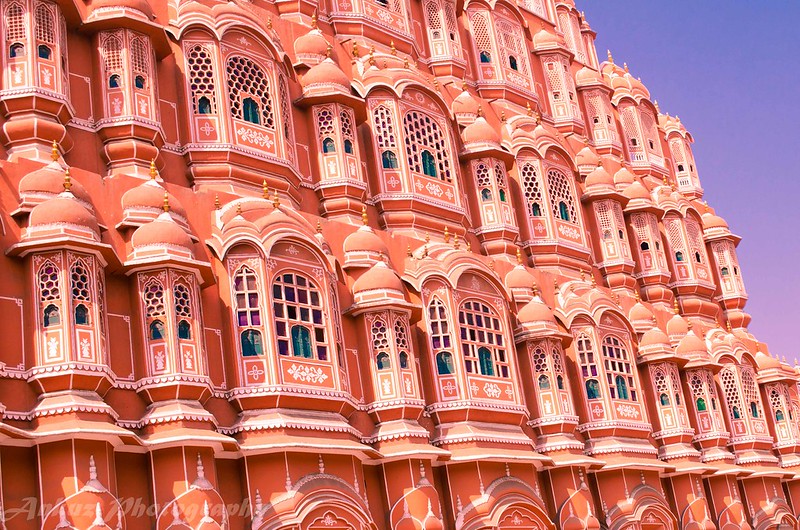
(ankuz– flickr/creative commons license)
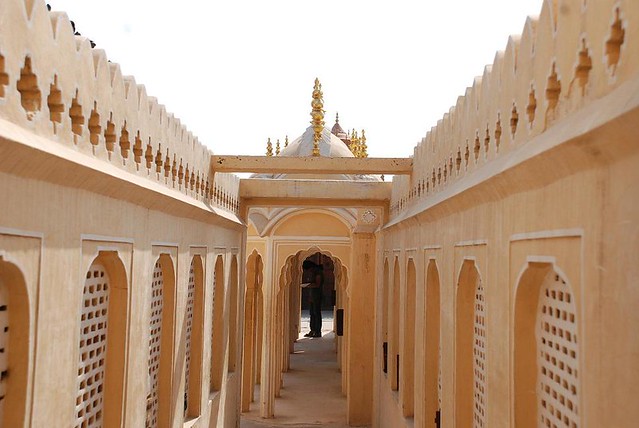
(sheetalsaini– flickr/creative commons license)

(paulswansen– flickr/creative commons license)
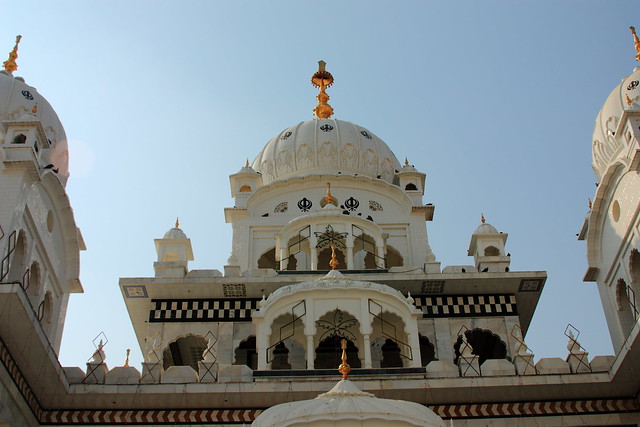
(strudelt– flickr/creative commons license)
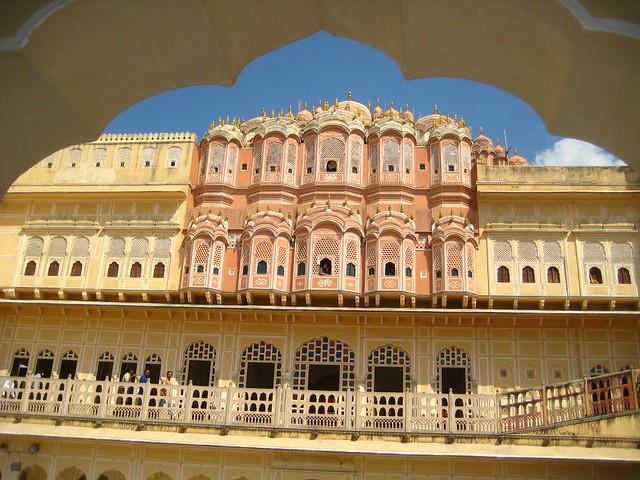
(Sameer Goyal Jaipur– flickr/creative commons license)
Sources:
^Rajashan Through The Ages, in Studies in Indian History v.3, by R.K. Gupta & S.R. Bakshi, Sarup & Sons 2008, p. 290
^Shared Idioms, Sacred Symbols and the Articulation of Identities In South Asia, by Kelly Pemberton and Michal Nijhawan, Routledge 2009 p. 194
